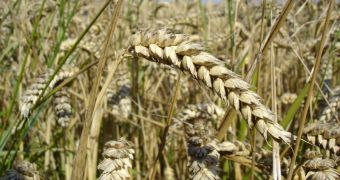A new genetic research seems to indicate the wheat yields have reached a stall, after years of being improved consistently via selective breeding.
In other words, it would now appear that genetic improvement methods are failing to yield even better results than those currently available.
This means that the plant has reached its maximum output level, which is a serious discovery with far-reaching implications. The new work suggests that authorities need to start planning for the future.
The main issue on the table is that the amount of land available for agriculture will remain the same in the United States, whereas the population – and its food demand implicitly – will continue to grow.
At this point, official statistics from the US Department of Agriculture (USDA) show that the nation is producing about 68 million metric tons of wheat annually, an amount that suffices for fueling internal demand.
There are two primary methods of boosting production. One revolves around converting more land to agricultural use, and the other calls for selective breeding.
The latter method ensures that the plants mature at just the right time, and also that they are more resistant to infections and other damaging environmental factors.
Since five decades ago, geneticists have produced new varieties of wheat annually, that have ensured a sustained rise in wheat yields of up to 1.1 percent each year.
But, starting in 1984, the sustained increase in yield has begun decreasing, and experts believe that it's now starting to level off entirely.
The conclusion belongs to a study led by University of Nebraska geneticist Robert Graybosh and Oregon State University geneticist C. James Patterson. They looked at USDA statistics spanning more than 50 years back.
When it comes to current improvement efforts, “it's sort of reshuffling cards from the same deck,” Graybosch says, quoted by ScienceNow.
Speaking of the possible methods that the nation could employ to boost wheat yields, the expert adds that the “only way to make more wheat as a nation is to have better production practices.”
The team's work will be detailed in an upcoming issue of the esteemed scientific publication Crop Science.

 14 DAY TRIAL //
14 DAY TRIAL //